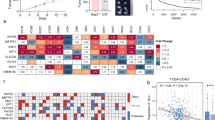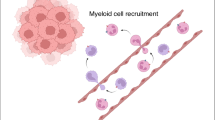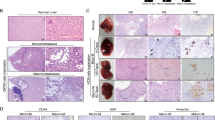Abstract
Aim:
The aim of this study was to investigate the effect of topotecan (TPT) on cancer cell migration.
Methods:
Growth inhibition of TPT was analyzed by MTT assay, and cancer cell migration was measured by transwell double chamber assay. To verify the effect of TPT on the chemokine receptors CXCR4 and CCR7, quantitative PCR, semi-quantitative PCR and Western blot analysis were performed. The secretion of MMP-2 and MMP-9 was detected by enzyme-linked immunosorbent assay (ELISA) and gelatin zymography. To evaluate possible contributions of CCR7 to MMP secretion, the overexpression vectors pcDNA3.1+-CCR7 and CCR7 siRNA were transiently transfected into MDA-MB-435 cells.
Results:
TPT inhibited cancer cell migration in a dose-dependent manner. Additionally, TPT significantly decreased the expression of CCR7 in both MDA-MB-435 and MDA-MB-231 cells and moderately reduced the expression of CXCR4 in MDA-MB-435 cells. The secretion of MMPs (MMP-2, MMP-9) was also inhibited by TPT. Overexpression of CCR7 increased the secretion of MMP-2/9 and cancer cell migration, whereas knockdown of CCR7 reduced active MMP-2/9 production and migration of MDA-MB-435 cells.
Conclusion:
TPT inhibited cancer cell migration by down-regulation of CCR7 and MMPs (MMP-2 and MMP-9).
Similar content being viewed by others
Log in or create a free account to read this content
Gain free access to this article, as well as selected content from this journal and more on nature.com
or
References
Thiery JP, Sleeman JP . Complex networks orchestrate epithelial mesenchymal transitions. Nat Rev Mol Cell Biol 2006; 7: 131–42.
Chambers AF, Groom AC, MacDonald IC . Dissemination and growth of cancer cells in metastatic sites. Nat Rev Cancer 2002; 2: 563–72.
Pienta KJ, Loberg R . The “emigration, migration, and immigration” of prostate cancer. Clin Prostate Cancer 2005; 4: 24–30.
Leong SP, Cady B, Jablons DM, Garcia-Aguilar J, Reintgen D, Jakub J, et al. Clinical patterns of metastasis. Cancer Metastasis Rev 2006; 25: 221–32.
Gupta SK, Lysko PG, Pillarisetti K, Ohlstein E, Stadel JM . Chemokine receptors in human endothelial cells: functional expression of CXCR4 and its transcriptional regulation by inflammatory cytokines. J Biol Chem 1998; 273: 4282–7.
Liotta LA . An attractive force in metastasis. Nature 2001; 410: 24–5.
Kang H, Watkins G, Parr C, Douglas-Jones A, Mansel RE, Jiang WG . Stromal cell derived factor-1: its influence on invasiveness and migration of breast cancer cells in vitro, and its association with prognosis and survival in human breast cancer. Breast Cancer Res 2005; 7: 402–10.
Andre F, Cabioglu N, Assi H, Sabourin JC, Delaloge S, Sahin A, et al. Expression of chemokine receptors predicts the site of metastatic relapse in patients with axillary node positive primary breast cancer. Ann Oncol 2006; 17: 945–51.
Cabioglu N, Yazici MS, Arun B, Broglio KR, Hortobagyi GN, Price JE, et al. CCR7 and CXCR4 as novel biomarkers predicting axillary lymph node metastasis in T1 breast cancer. Clin Cancer Res 2005; 11: 5686–93.
Cabioglu N, Sahin A, Doucet M, Yavuz E, Igci A, Yildirim EO, et al. Chemokine receptor CXCR4 expression in breast cancer as a potential predictive marker of isolated tumor cells in bone marrow. Clin Exp Metastasis 2005; 22: 39–46.
Wilson JL, Burchell J, Grimshaw MJ . Endothelins induce CCR7 expression by breast tumor cells via endothelin receptor A and hypoxia-inducible factor-1. Cancer Res 2007; 67: 854–5.
Takeuchi H, Fujimoto A, Tanaka M, Yamano T, Hsueh E, Hoon DS . CCL21 chemokine regulates chemokine receptor ccr7 bearing malignant melanoma cells. Clin Cancer Res 2004; 10: 2351–8.
Iurlaro M, Loverro G, Vacca A, Cormio G, Ribatti D, Minischetti M, et al. Angiogenesis extent and expression of matrix metalloproteinase-2 and -9 correlate with upgrading and myometrial invasion in endometrial carcinoma. Eur J Clin Invest 1999; 29: 793–801.
Sillem M, Prifti S, Koumouridis A, Runnebaum B . Invasiveness corresponds to differentiation rather than to proteinase secretion in endometrial cancer cell lines. Eur J Gynaecol Oncol 1999; 20: 367–70.
Hu W, Zhen X, Xiong B, Wang B, Zhang W, Zhou W . CXCR6 is expressed in human prostate cancer in vivo and is involved in the in vitro invasion of PC3 and LNCap cells. Cancer Sci 2008; 99: 1362–9.
Tang CH, Tan TW, Fu WM, Yang RS . Involvement of matrix metalloproteinase 9 in stromal cell-derived factor-1/CXCR4 pathway of lung cancer metastasis. Carcinogenesis 2008; 29: 35–43.
Kaufmann SH, Peereboom D, Buckwalter CA, Grochow LB, Donehower RC, et al. Cytotoxic effects of topotecan combined with various anticancer agents in human cancer cell lines. J Nat Cancer Inst 1996; 88: 734–41.
von Pawel J, Gatzemeier U, Pujol JL, Moreau L, Bildat S, Ranson M, et al. Phase II comparator study of oral versus intravenous topotecan in patients with chemosensitive small-cell lung cancer. J Clin Oncol 2001; 19: 1743–9.
Rodriguez M, Rose PG . Improved therapeutic index of lower dose topotecan chemocherapy in recurrent ovarian cancer. Gynecol Oncol 2001; 83: 257–62.
Oberhoff C, Kieback DG, Wurstlein R, Deertz H, Sehouli J, van Soest C, et al. Topotecan chemotherapy in patients with breast cancer and brain metastases: results of a pilot study. Onkologie 2001; 24: 256–60.
Korfel A, Oehm C, von Pawel J, Keppler U, Deppermann M, Kaubitsch S, et al. Response to topotecan of symptomatic brain metastases of small-cell lung cancer also after whole-brain irradiation: a multicentre phase II study. Eur J Cancer 2002; 38: 1724–9.
Hou YF, Yuan ST, Li HC, Wu J, Lu JS, Liu G, et al. ER beta exerts multiple stimulative effects on human breast carcinoma cells. Oncogene 2004; 23: 5799–806.
Vicari AP, Caux C . Chemokines in cancer. Cytokine Growth Factor Rev 2002; 13: 143–54.
Murakami T, Cardones AR, Hwang ST . Chemokine receptors and melanoma metastasis. J Dermatol Sci 2004; 36: 71–8.
Tanaka T, Bai Z, Srinoulprasert Y, Yang BG, Hayasaka H, Miyasaka M . Chemokines in tumor progression and metastasis. Cancer Sci 2005; 96: 317–22.
Wang J, Xi L, Gooding W, Godfrey TE, Ferris RL . Chemokine receptors 6 and 7 identify a metastatic expression pattern in squamous cell carcinoma of the head and neck. Adv Otorhinolaryngol 2005; 62: 121–33.
Kodama J, Hasengaowa, Kusumoto T, Seki N, Matsuo T, Ojima Y, et al. Association of CXCR4 and CCR7 chemokine receptor expression and lymph node metastasis in human cervical cancer. Ann Oncol 2007; 18: 70–6.
Liang Z, Wu T, Lou H, Yu X, Taichman RS, Lau SK, et al. Inhibition of breast cancer metastasis by selective synthetic polypeptide against CXCR4. Cancer Res 2004; 64: 4302–8.
Lechertier T, Berard M, Vassy R, Herve MA, Crepin M . Transendothelial migration of two metastatic breast carcinoma cells depend on the SDF-lalpha-CXCR4 complexes. Anticancer Res 2004; 24: 4011–7.
Singh S, Singh UP, Grizzle WE, Lillard JW Jr . CXCL12-CXCR4 interactions modulate prostate cancer cell migration, metalloproteinase expression and invasion. Lab Invest 2004; 84: 1666–76.
Chinni SR, Sivalogan S, Dong Z, Filho JC, Deng X, Bonfil RD, et al. CXCL12/CXCR4 signaling activates Akt-1 and MMP-9 expression in prostate cancer cells: the role of bone microenvironment-associated CXCL12. Prostate 2006; 66: 32–48.
Redondo-Muñoz J, José Terol M, García-Marco JA, García-Pardo A . Matrix metalloproteinase-9 is up-regulated by CCL21/CCR7 interaction via extracellular signal-regulated kinase-1/2 signaling and is involved in CCL21-driven B-cell chronic lymphocytic leukemia cell invasion and migration. Blood 2008; 111: 383–6.
Acknowledgements
This project was financially supported by the National High Technology Research and Development Program of China (863 Program, No 2004AA2Z3785) and by a grant from the Natural Science Foundation of Jiangsu province (No BK2006150).
Author information
Authors and Affiliations
Corresponding author
Rights and permissions
About this article
Cite this article
Lin, Ss., Sun, L., Zhang, Yk. et al. Topotecan inhibits cancer cell migration by down-regulation of chemokine CC motif receptor 7 and matrix metalloproteinases. Acta Pharmacol Sin 30, 628–636 (2009). https://doi.org/10.1038/aps.2009.32
Received:
Accepted:
Published:
Issue date:
DOI: https://doi.org/10.1038/aps.2009.32



